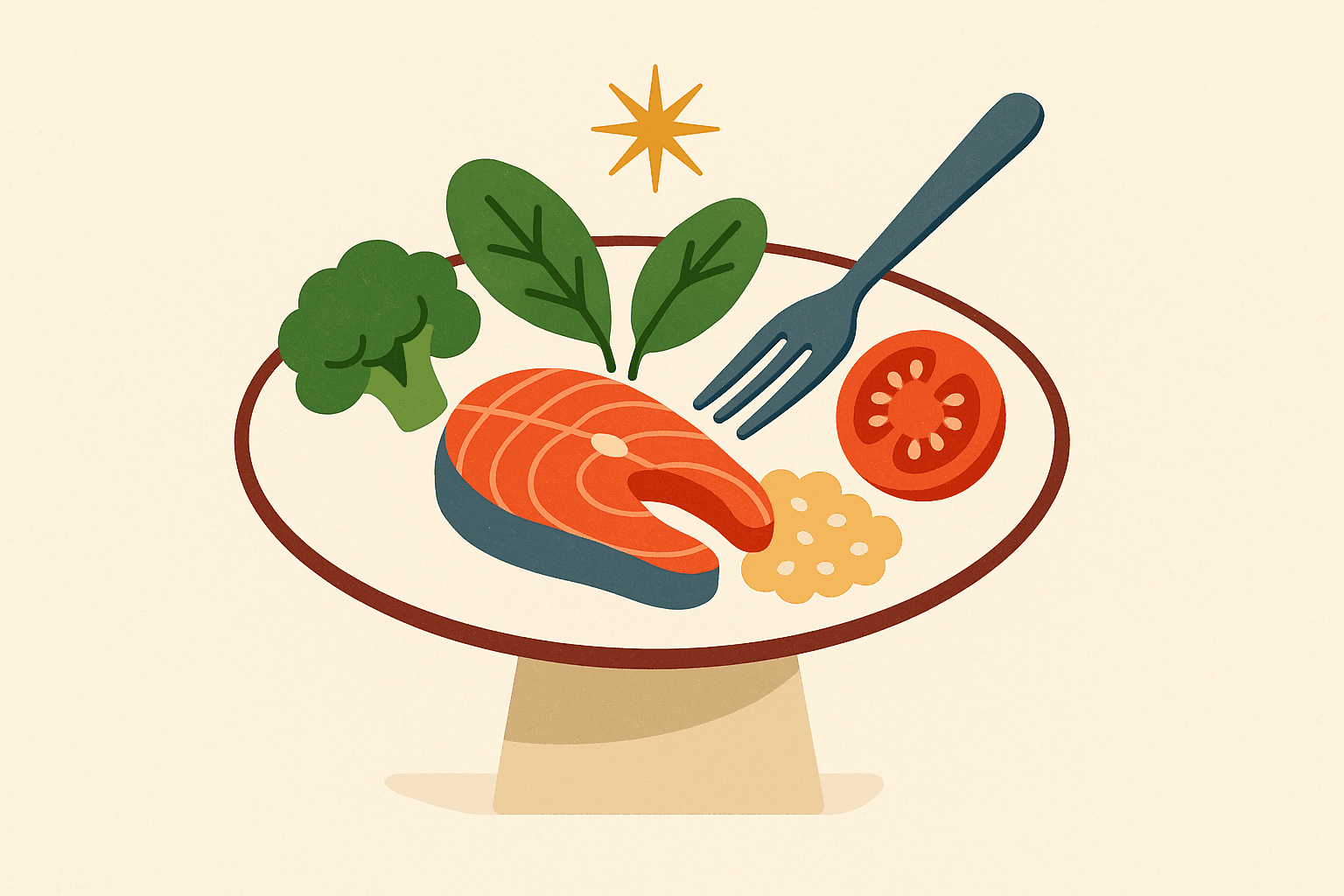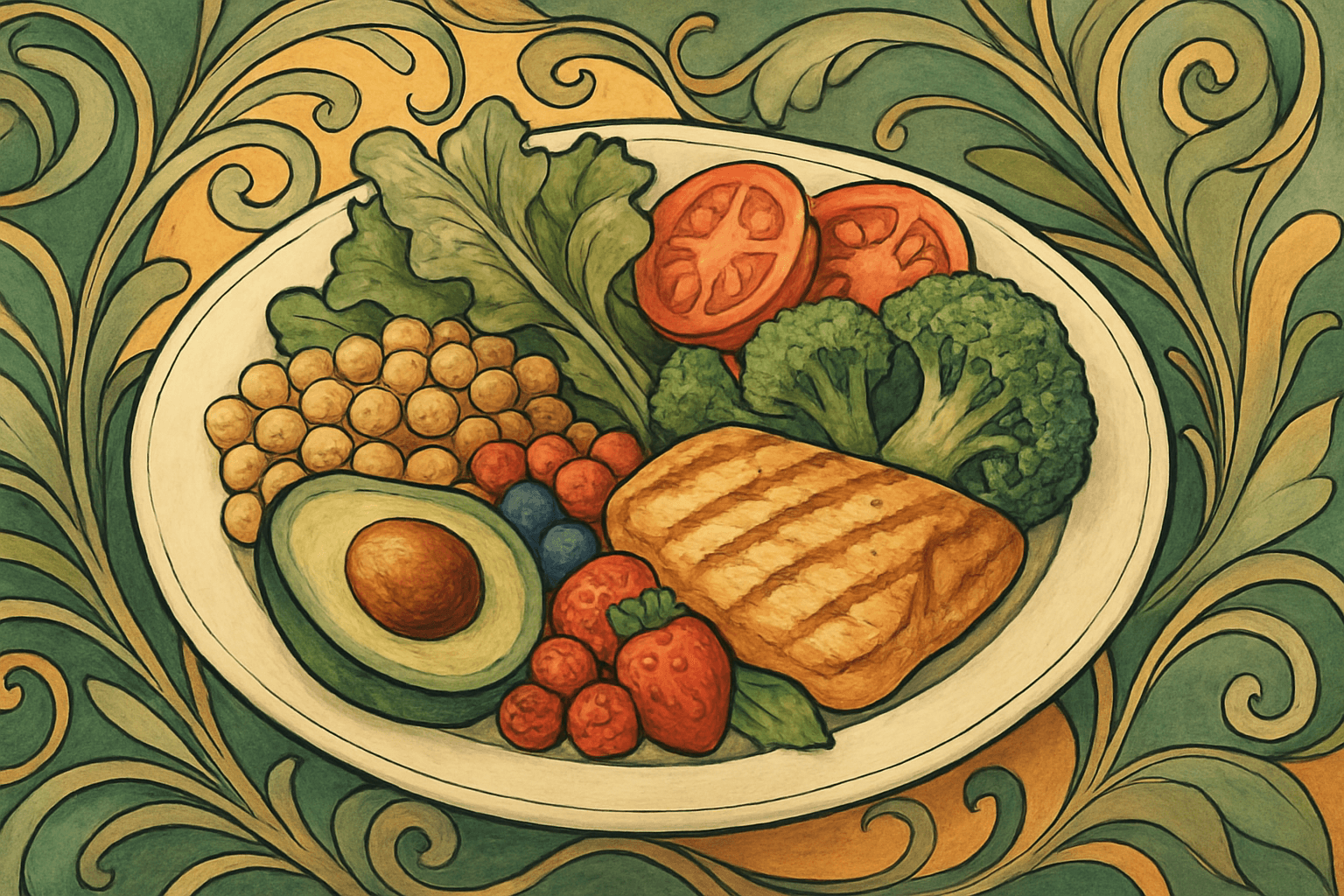The Foundations of Healthy Eating: Science-Backed, Simple, and Actually Doable
Published on June 11, 2025

“Healthy eating isn’t a perfect.” It’s not about counting every gram or banning carbs for life. It’s about building habits that nourish your body, support your mind, and help you feel your best.
Rule 1: Eat Whole, Minimally Processed Foods
Eat more of these:
Vegetables and fruits
Whole grains (oats, quinoa, brown rice)
Pulses (beans, legumes, peas)
Nuts and seeds
Lean proteins (fish, poultry, eggs, tofu)
These foods provide fiber, vitamins, minerals, and antioxidants your body needs.
Limit sugary snacks, soft drinks, and ultra-processed meals with added fats and sodium.
Tips to make it easier:
Stock up on canned beans, frozen veggies, and quick-cook grains
Check ingredient lists — fewer and more familiar ingredients are better
Cook more at home for greater control over portions and ingredients
Principle 2: Create a Balanced Plate
Visual plate guide:
Half: non-starchy vegetables
Quarter: protein (chicken, fish, tofu, eggs)
Quarter: high-fiber whole grains (quinoa, lentils)
Small amount: healthy fats (olive oil, avocado, nuts)
Why it works:
Helps you feel full
Stabilizes blood sugar
Supports hormonal balance
Example: Grilled chicken + sweet potato + broccoli + tahini
Don’t forget herbs and spices — they add flavor and antioxidants without calories.
Principle 3: Eat in a Regular and Conscious Way
Aim to eat every 4–5 hours. Avoid skipping meals or erratic patterns.
Practice mindful eating:
No screens
Eat slowly
Tune into hunger and fullness cues
Try hunger scoring: Eat at level 3–4 (mild hunger), stop at 6–7 (comfortably full)
Chew slowly, set the table, and focus on how the food makes you feel.
Principle 4: Stay Hydrated
Water supports digestion, energy, and even helps control appetite.
Drink 6–8 cups (1.5–2 L) per day — more if active or in a hot climate.
Hydration hacks:
Flavor water with lemon, mint, cucumber
Drink water first thing in the morning
Keep a reusable bottle nearby
Try a glass of water before snacks — you might just be thirsty
Principle 5: Learn It and Forget It (for Now)
The best eating plan is one you can stick with long-term.
You don’t need to:
Ban foods
Feel deprived
Be perfect
Healthy eating means:
Flexibility and joy
Adapting to your culture, budget, and taste
Celebrating progress, not perfection
It’s okay to eat cake, pizza, or chocolate — what matters is your overall pattern.
Start Small: Tiny Habits that Grow
Easy wins:
Switch to whole grain bread
Drink water before meals
Cook one more meal at home weekly
Other ideas:
Start lunch with a salad or soup
Keep fruit visible instead of snacks
Cook double and freeze
Downsize plates to manage portions
Use habit stacking: link a new habit to an existing one (e.g. drink water after brushing teeth)
Keep a health journal — track how your body feels after meals. Notice patterns that work for you.
Final Words
Healthy eating is a journey, not a finish line.
Feed your body with love — not restriction.
Don’t follow trends blindly. Choose foods that energize and satisfy you.
Food is nourishment — but also pleasure, tradition, and connection.
Be curious. Learn your body’s signals.
Eat to thrive — not just survive.
No extremes. Just real food, eaten with joy.








